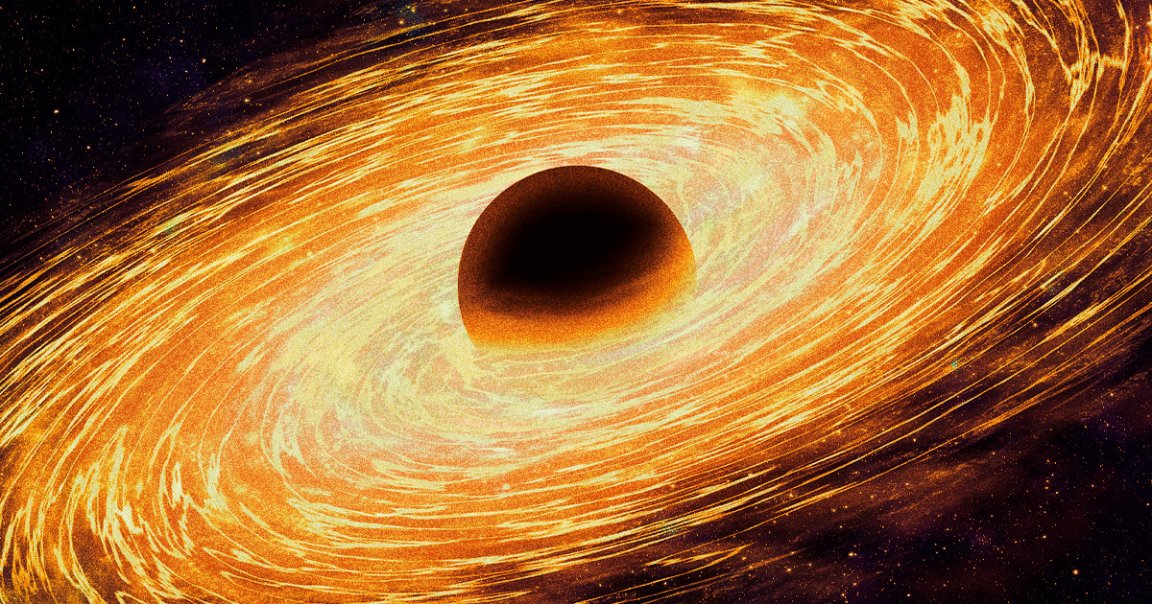
Dark Disguise
New research about the nature of black holes could resolve a fundamental problem at the heart of physics.
Black holes are cryptic cosmic objects with a center point of infinite density called a singularity. The gravity they wield is so powerful that beyond their outer boundary called the event horizon, nothing — not even light — can escape. Hence their dark moniker: they’re effectively invisible to us.
But maybe we’ve gotten it all wrong. As proposed in a recent study published in the journal Physical Review D, black holes could actually be hypothetical objects called “frozen stars.”
If true, the theory would provide a more mundane physical explanation for the monstrous implications of black holes, and most importantly, solve the black hole information paradox proposed by Stephen Hawking (more on that in a minute.)
“Frozen stars are a type of black hole mimickers: ultracompact, astrophysical objects that are free of singularities, lack a horizon, but yet can mimic all of the observable properties of black holes,” study coauthor Ramy Brustein, a professor of physics at Ben-Gurion University in Israel, told Live Science. “If they actually exist, they would indicate the need to modify in a significant and fundamental way Einstein’s theory of general relativity.”
Information Conservation
By expanding on general relativity with quantum mechanics, Hawking showed that black holes should actually emit radiation due to interactions that occur near their event horizon. In this scenario, fleeting pairs of so-called virtual particles near this boundary should recombine to “cancel out,” but are split when one falls into the event horizon. The other particle, siphoning energy from the black hole, escapes into the cosmos.
Over time — trillions of years, perhaps — this causes the black hole to leak energy in the form of heat, and consequently shrink in mass, until it effectively evaporates.
That’s all well and good, except for one thing: once it evaporates, all the information imprisoned within the black hole would be lost forever. The laws of physics say that simply can’t be; information can be transformed, but never destroyed.
Cold Calculation
This is neatly circumvented if black holes are actually frozen stars, the researchers argue. Instead of comprising an event horizon and a singularity, these would be dense — but not infinitely dense — ultra-compact objects that would in many ways appear just like black holes to us, down to their thermal radiation.
Their structures would have to abide by some heady string theory so that they can exist in such a dense state without collapsing into a singularity, thereby ensuring that information isn’t destroyed. While they wouldn’t have an event horizon, frozen stars would still absorb almost anything that falls into them, according to Brustein.
“We have shown how frozen stars behave as (nearly) perfect absorbers although lacking a horizon and act as a source of gravitational waves,” Brustein told Live Science. “Moreover, they source the same external geometry as that of a conventional model of black holes and reproduce their conventional thermodynamic properties.”
Of course, this proposal flies in the face of our common understanding of black holes. But the researchers say that the detection of gravitational waves could be used to tease out the mysterious structures of frozen stars — if in fact they exist.
More on black holes: Scientists Spot Giant Black Hole Destroying Galaxy